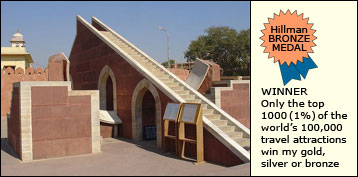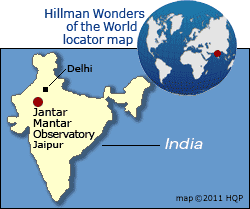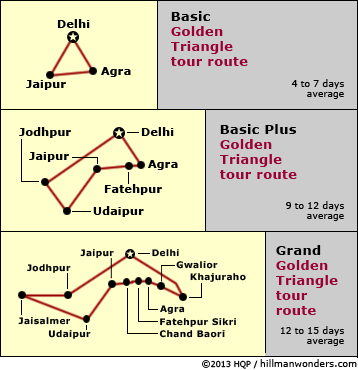



Jantar Mantar
Observatory
Travel tips you can trust

Why
Jantar Mantar Observatory
in Jaipur
is special
Although the site might look like a child's fancy playground with oversized toys, it's a serious collection of some 20 early 18th century astronomical measurement instruments.
Their purpose was to keep time, forecast eclipses, and track planets, stars, and constellations for scientists, agriculturists, and astrologists.
Jantar Mantar Observatory
tips & insights
 History in brief
History in brief
Maharaja Jai Singh II built the complex from 1727 to 1734. Similar ones were also constructed in Delhi and three other cities, but the one in Jaipur is the biggest and best preserved.
 Most famous unit
Most famous unit
The Samrat Yantra sundial soars 27 meters (90 feet). Its two-second accuracy was a remarkable feat in the early 1700s. However, this unit is a tad less accurate today. Over time, its weight shifted the ground beneath it, enough to slightly misalign the structure.
 Other instruments
Other instruments
There is a set of smaller sundials (one for each Zodiac sign) as well as other astronomical devices of different shapes, sizes, and functions.
 Name
Name
The site's name loosely translates as "calculator" in English. Jantar = "instrument" and Mantar = "calculating".
 Location in India
Location in India

Jantar Mantar is on
the famous Golden Triangle tour route


Wonders of India - Top 10 rankings
Basic Hindi phrases for travelers
Indian cuisine
Flying to India
World's Top 100 Wonders
World's Top 1000 Wonders
Site map
My credentials
About my website and criteria
Reader testimonials



World's Top 100 Wonders
World's Top 1000 Wonders
Site map
My credentials
About my website and criteria
Reader testimonials




